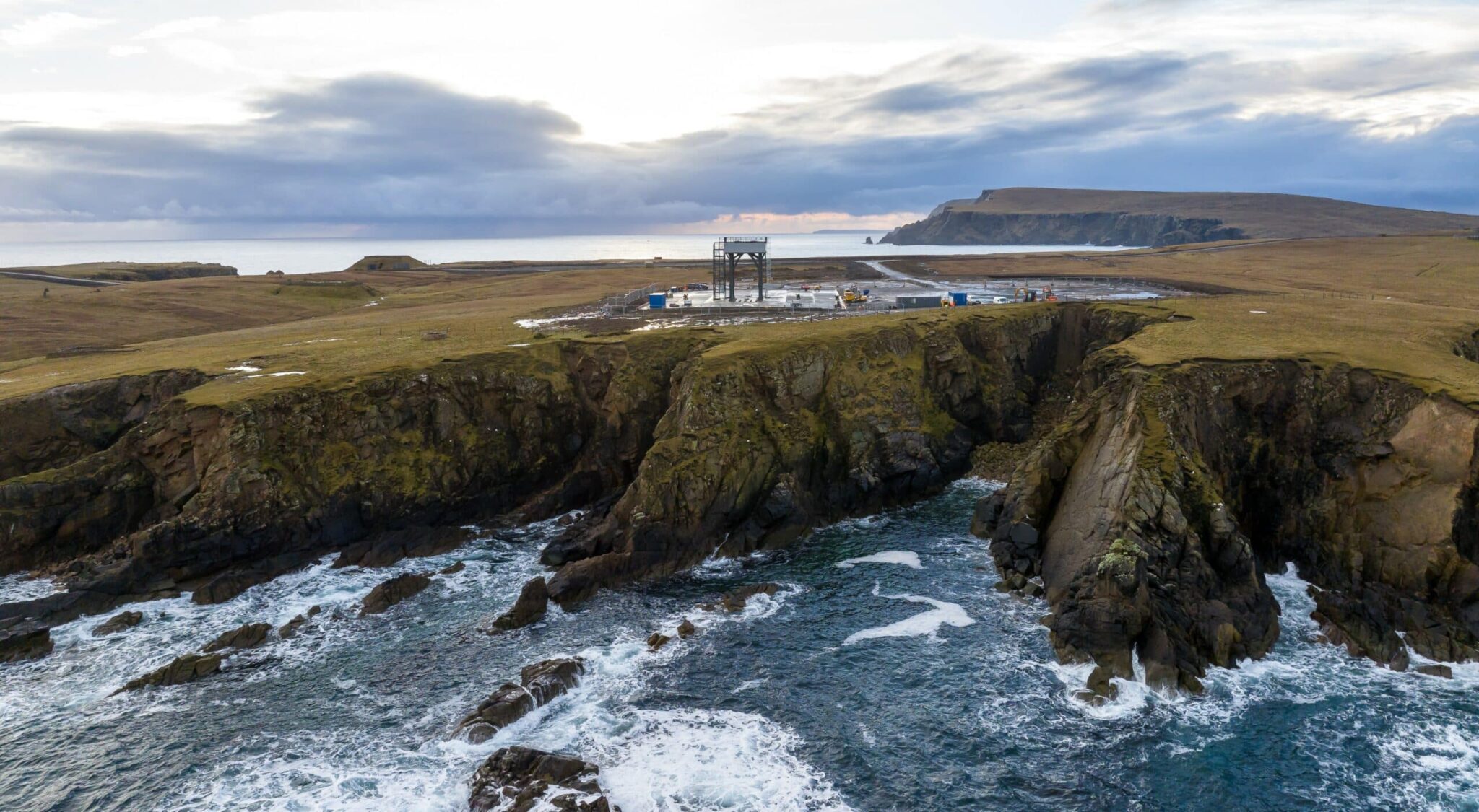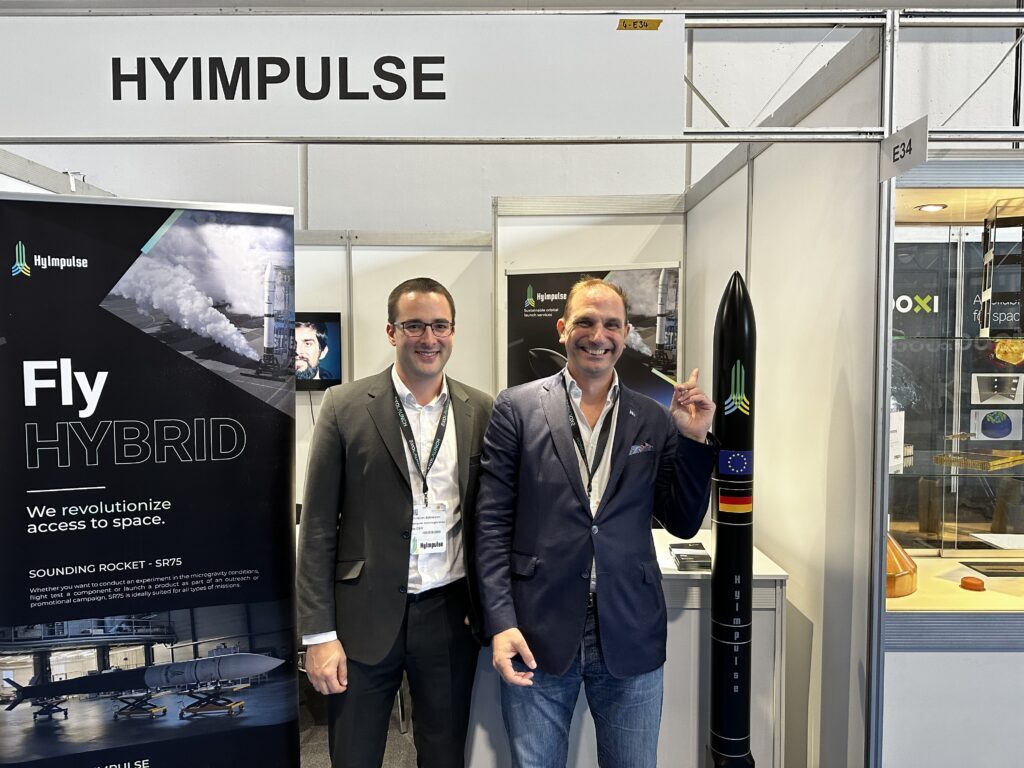17.11.2023

Rocket Factory Augsburg aims to launch from SaxaVord Spaceport, located at the northernmost part of Scotland’s Shetland Islands, in 2024. Credit: Rocket Factory Augsburg
BREMEN, Germany — Startup Rocket Factory Augsburg perceive an historic shift has occurred in Europe launch, just as the firm closes in on its first orbital launch attempt.
Ministers at the European Space Summit in Seville, Spain, last week launched a new competitive approach to space transportation. This approach aims to empower commercial companies and reduce reliance on public funding. The European Space Agency will in the future act as an anchor customer for commercial space activities and services.
The shift aims to address a “launcher crisis” caused in part by lengthy delays in the development of Ariane 6.
“The Seville decision for us is very good,” Jörn Spurmann, chief commercial officer at Rocket Factory Augsburg (RFA), told SpaceNews at Space Tech Expo Europe in Bremen.
“It seems like an historic moment that ESA decides it doesn’t want to develop its own systems anymore in the future, but try to save money, privatize it, and support a few companies trying to achieve it. And that’s obviously perfect for us.”
The shift to a competitive, services model has been praised by officials, though questions remain.
RFA has focused on developing its RFA One small launcher since the company’s inception in 2018. The European launch “paradigm shift” means RFA can now also begin to think bigger. Spurmann says a medium or heavy lift system could follow, building on the RFA One.
Another new avenue of opportunity is ESA’s commercial cargo program, also announced in Seville. RFA had two months earlier announced a consortium to develop Argo, a cargo service to the ISS and future commercial space stations. Spurmann says meeting the 2028 deadline set by ESA is achievable, but challenging.
For now though, the focus 100 percent on the company’s first launch, Spurmann states. The three-stage, 30-meter-tall and 2-meter- diameter RFA One uses kerosene-liquid oxygen staged combustion Helix engines. It targets a deployment capability of up to 1,300 kilograms to a 500-kilometer polar orbit. It can alternatively carry 450 kg to geostationary transfer orbit.
“We’re confident. We have completed the full duration hot fire of the second stage in May and repeated it several times. The team can see the finish line. The core stage is essentially just a larger version of what we did with the second stage, because it’s all the same technologies, structures, engines. It’s just more and bigger.”
“We’re working on completing the core stage, completing the launch site, and then getting the tests together towards Q1 next year.”
The launch of RFA is set to take place at SaxaVord Spaceport in Scotland’s Shetland Islands. The UK Space Agency recently committed $4.3 million to assist RFA’s preparatory efforts for its first flight.
Targeted for summer 2024, the launch could position both RFA and SaxaVord Spaceport as significant players in the emerging European commercial launch services ecosystem.
Quelle: SN
+++
SaxaVord Spaceport to host HyImpulse orbital rocket launches

Christian Schmierer of HyImpulse and SaxaVord's Robin Huber at Space Tech Expo Europe. Credit: SaxaVord Spaceport/HyImpulse
BREMEN, Germany — The UK’s SaxaVord Spaceport plans host orbital launches of HyImpulse Technologies rocket from late 2025.
The two companies announced the signing of a letter of intent at Space Tech Expo Europe in Bremen, Germany, Nov. 15, and followed three years of cooperation for an extensive series of engine tests.
HyImpulse, a launch services provider and DLR spinoff based in Baden-Württemberg, Germany, is currently gearing up for its inaugural suborbital launch early next year from Australia. It will however look to conduct two suborbital launches from SaxaVord Spaceport, located in Scotland’s Shetland Islands, from August 2024 onwards. HyImpulse has already secured an Air Navigation Order (ANO) license from the UK’s Civil Aviation Authority for one launch.
These will be followed by first orbital launches from late 2025 onwards. The plan envisions rising to full commercial operations by 2030.
HyImpulse’s SR75 sounding rocket and its small launcher SL1—which can carry a payload of up to 500 kg into low Earth orbit—are powered by hybrid propulsion systems using paraffin and liquid oxygen. The firm in recent days completed the assembly and integration of its suborbital rocket SR75.
The agreement between SaxaVord and HyImpulse comes amid competition for both European commercial spaceports and launch companies to establish themselves. Spaceports at Sutherland, Scotland, Andøya off the coast of Norway, and Kiruna in northern Sweden are all planning to host orbital launches in the next year or so.
“HyImpulse Technologies have been an integral part of the SaxaVord journey and a fantastic supporter of our vision,” Robin Huber, SaxaVord business development manager, said in a statement.
“They carried out their first tests at Scatsta in Shetland in early 2021, and have been testing and honing their technology both there and in Germany ever since. So we are delighted to announce that we have reached an agreement for a program that will culminate in the company having a permanent presence in Unst as it gears up towards full commercial operations.”
“The Shetland Isles and SaxaVord Spaceport are an integral part of HyImpulse’s journey to space,” Mario Kobald, HyImpulse CEO, said.
“We have been in close collaboration with SaxaVord since 2021 and have been doing our flight motors qualification testing also on the islands. We are looking forward to carrying out our first orbital rocket launches from SaxaVord Spaceport.”
Quelle: SN
